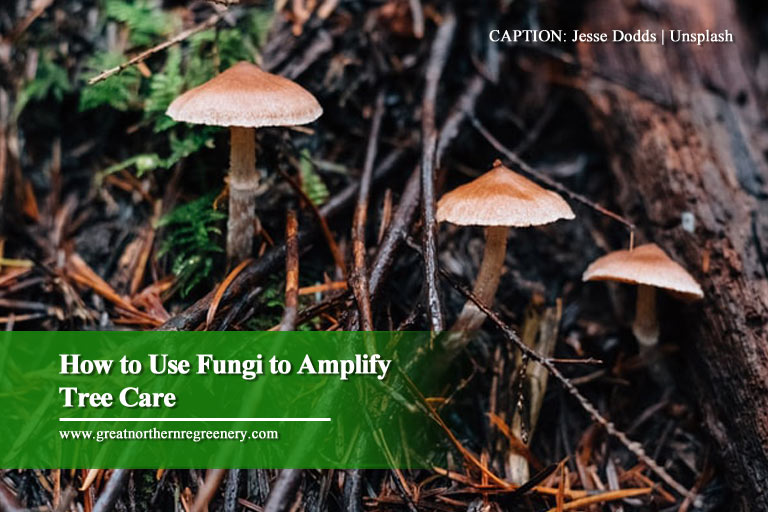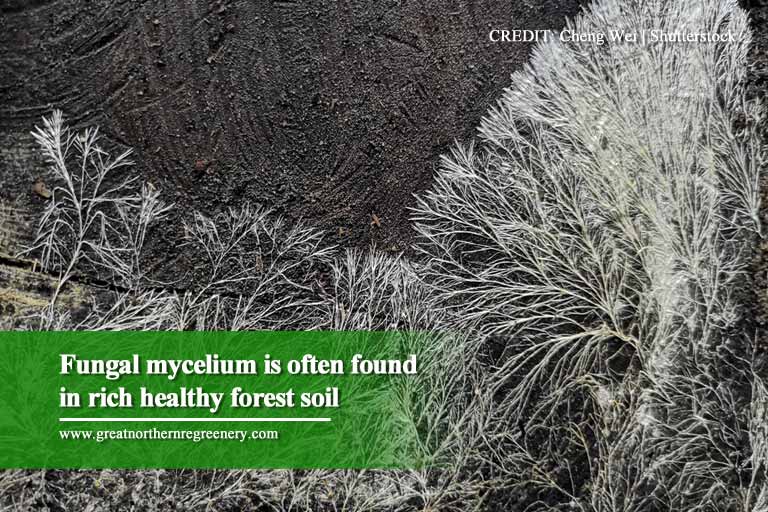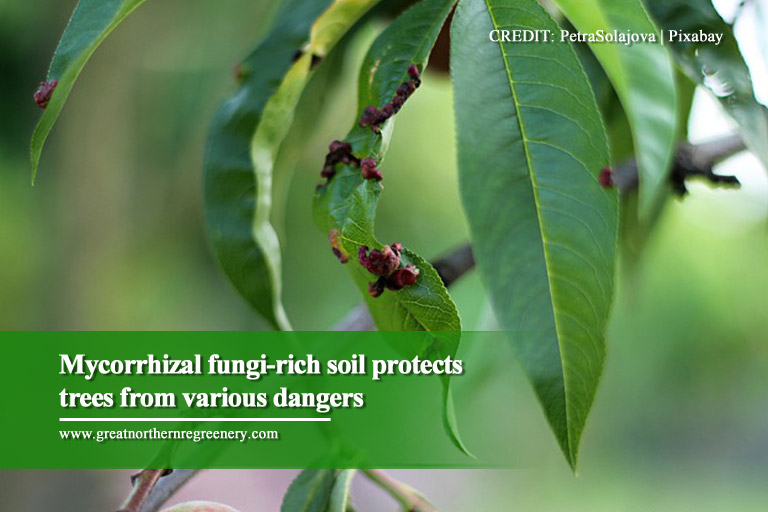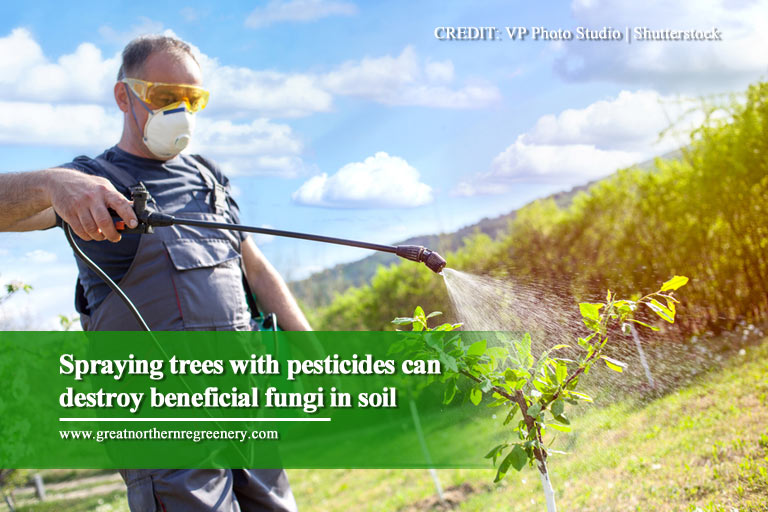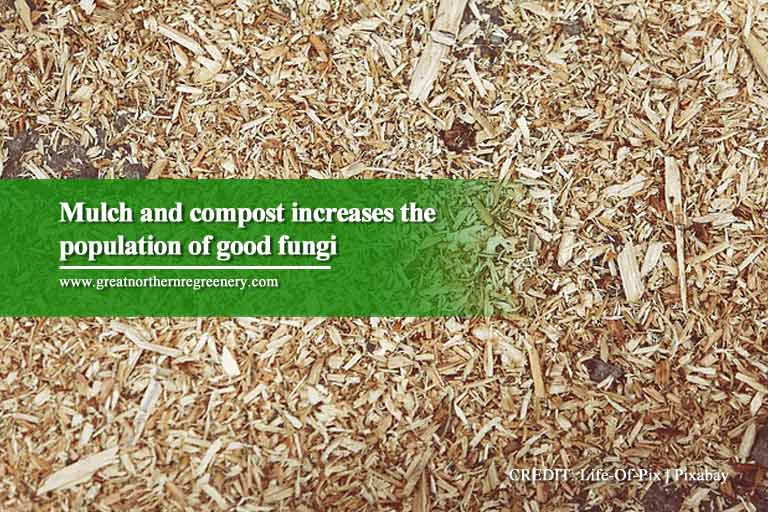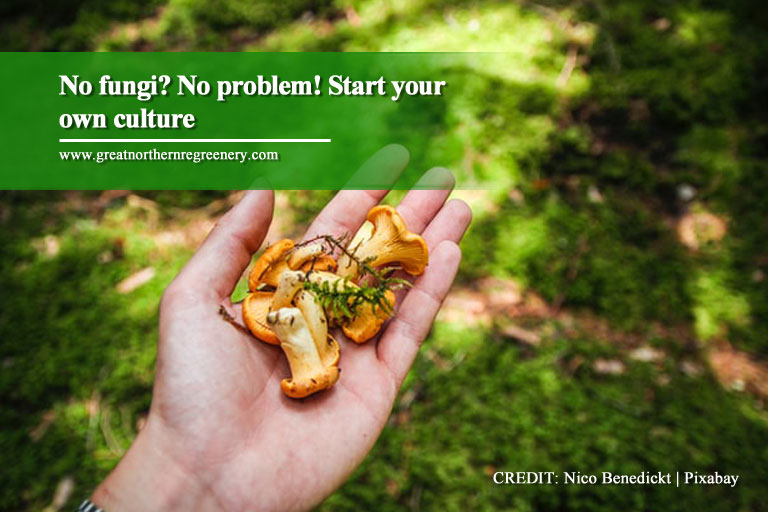Fungi may be the last thing that comes into your mind when you think about tree and plant care. Although many rely on fertilizers and mulching, fungi in the soil are considered the unsung heroes of the ecosystem. While their presence in the garden is often overlooked, their contributions to tree and plant health are quite significant.
In healthy garden soil, good fungi outnumber the bad. Fibrous networks of white threads of mycelium (the vegetative part of a fungus) are part of a healthy soil-food web, which helps locate water and nutrients and protect the roots.
While there is a world of fungi thriving in healthy soil, let us focus on one type of beneficial fungi: mycorrhizal fungi.
Understanding the Mycorrhizal Fungi and Plant Relationship
Mycorrhizal fungi play an important role in the existence of plants. They attach themselves to the roots and act as plant root system extensions forming a symbiotic relationship between the roots and fungi. Its mutualistic relationship can be measured through the supply and demand of nutrients exchanged between the tree and the fungi. This primal, mutually beneficial relationship can make way for a more sustainable, eco-friendly agriculture strategy since it reduces the use of chemical fertilizers that harm the ecosystem.
In this partnership, the mycorrhizal fungi feed on the carbon-rich sugar (a product of photosynthesis) supplied by the host plant. In return, the fungi help break down plant litter and soil pools (composed of soil particles, rocks), helping roots collect water and nutrients (nitrogen, phosphorus, trace minerals) that plants need to survive and grow healthy.
As the fungi thrive in the soil, their long white threaded hyphae extend in different directions. This extensive network of fungi gives the tree roots access to 100,000 times more soil than it would be on its own. Trees nearby can tap into this network and benefit from the redistribution of water and nutrients. It also allows other trees to communicate with each other through the mycorrhizal network. All trees involved in this mycorrhizal relationship receive a sufficient amount of nutrients, which enable them to withstand drought and other environmental stresses, root pathogens, and other diseases.
How Mycorrhizal Fungi Help Boost Tree Health
There is a whole world of mycorrhizal fungi in your garden just lying underneath your feet.
Here are some ways mycorrhizal fungi are essential to tree care:
- Pest and Disease Resistance – Improving water and nutrient uptake helps increase the ability of the tree to combat various tree pests and diseases. Mycorrhizal fungi protect the tree from soil-borne pests and diseases by creating protective webs around the roots. They also generate antibiotic compounds, stimulate other beneficial soil fungi in the root system, and trigger plant defense genes to block harmful fungi from the fragile roots.
- Survival in Harsh Soil Conditions – Some types of mycorrhizal fungi help trees thrive in soil with low or high pH levels, high salt content, heavy metals, and low fertility. However, more studies need to be conducted to understand how these trees can survive in such conditions. Additionally, the presence of mycorrhizal fungi does not only improves the survival of the tree. They also boost soil health through time by physically and chemically disintegrating compacted soils.
- Provide Food for Wildlife – Animals help spread fungi spores. Some types of fungi grow fruiting bodies in the form of mushrooms or sporocarps, which provide wildlife with excellent sources of carbohydrates, protein, minerals, and water. Sporocarps are edible to humans.
How to Encourage Growth of Beneficial Fungi
Clearly, fungi play a vital role in promoting tree and plant health. Mycorrhizal fungi are already living in your garden soil, but there are several ways you can do to multiply their population.
- Maintain Native Fungus Population – Although many beneficial fungi are found in forest soil, mycorrhizal fungi can also adapt to local soil, climate, and garden plants. However, gardening activities, such as power tilling, too much application of fertilizer, use of pesticides, and removal of plant litter can affect the growth of good fungi. Instead of mechanical tilling, use hand tools to cultivate and mix commercial beneficial fungi into the soil to boost the overall health and survival rate of the tree.
- Reduce Use of Fertilizer and Fungicide – A well-fertilized soil may be good for the plant but not for many mycorrhizal fungi. Large applications of fertilizers containing high levels of soluble phosphorus and nitrogen can harm the beneficial fungi in the garden soil. While foliar fungicide spray does not affect the growth of mycorrhizal fungi, root drenches can kill both good and bad fungi. Make sure to read and follow the instructions found in the package to reduce the likelihood of destroying good fungi.
- Feed It Mulch and Compost – Fungi consume organic materials. Feeding them with organic mulches and compost matter is ideal for fostering a healthy fungi population in your garden soil. Dump pine straw, bark or hardwood mulches, fallen deciduous trees leaves on top of the soil.
- Use Cover Crops and Crop Rotation – When there is no plant thriving in the soil, it means famine for mycorrhizal fungi. Cover crops do more than just capturing nitrogen for the soil. Grass and legume cover crops protect many soil fungi. When spring comes, there will a healthy population of fungi and plentiful organic to feed them. Onion, corn, and beans make good soil fungi partners. Make sure to rotate these crops around year after year to keep the fungi happy in your vegetable garden.
How to Transplant Beneficial Fungi Into Your Garden
Here is how to successfully transplant and grow beneficial fungi in your garden soil for your trees and plants:
- To create a favourable condition for mycorrhizal fungi for trees, perform site prep work, earthworks, cover cropping, and crop rotation.
- Add saprophytic fungi to your garden soil to stimulate fungal activity and the soil creation process.
- Introduce mycorrhizal fungi to form a healthy underground network to ensure a thriving environment for growing trees.
- Use the soil to make a compost tea and spread it all over the garden to attract other plant-friendly microorganisms to support the growth of beneficial fungi and plants.
- Make sure to add woody debris, such as mulch, logs, and twigs to feed the soil-friendly fungi.
Using beneficial fungi as a gardening strategy helps boost tree and plant health in a natural, cost-effective, and eco-friendly way. If you need professional advice on how to ensure that your trees grow strong and healthy, talk to an expert tree arborist in Bradford. Call Great Northern ReGreenery now at (905) 775-7444 to book our tree care services.






